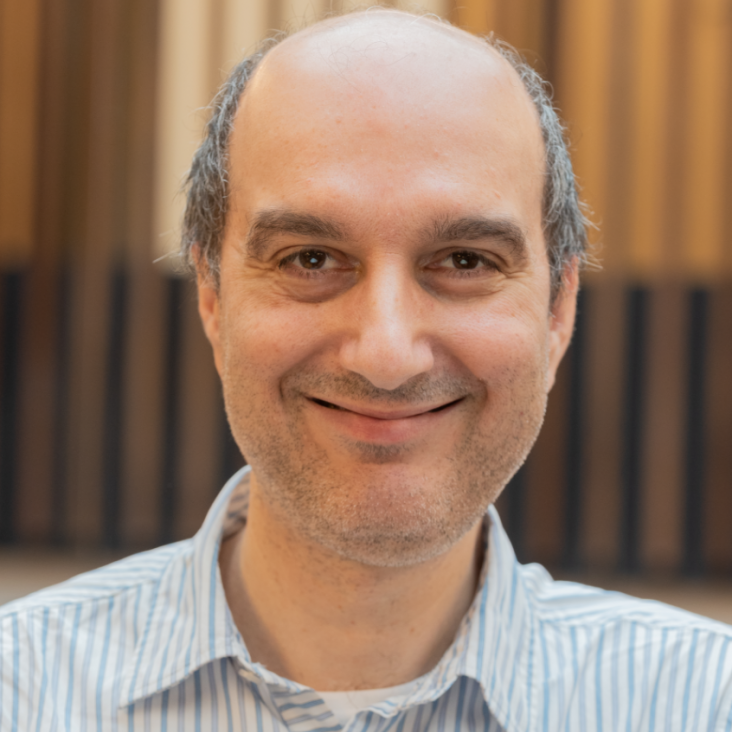Ionic structure, liquid-liquid phase transitions, x-ray diffraction, and x-ray Thomson scattering in shock-compressed liquid silicon in the 100-200 GPa regime
Physical Review E American Physical Society 111:1 (2025) 015205
Abstract:
Recent cutting-edge experiments have provided in situ structure characterization and measurements of the pressure (P), density (¯ρ) and temperature (T) of shock compressed silicon in the 100 GPa range of pressures and up to ∼10,000K. We present first-principles calculations in this P, T, ρ¯ regime to reveal a plethora of novel liquid-liquid phase transitions (LPTs) identifiable via discontinuities in the pressure and the compressibility. Evidence for the presence of a highly-correlated liquid (CL) phase, as well as a normal-liquid (NL) phase at the LPTs is presented by a detailed study of one LPT. The LPTs make the interpretation of these experiments more challenging. The LPTs preserve the short-ranged ionic structure of the fluid by collective adjustments of many distant atoms when subject to compression and heating, with minimal change in the ion-ion pair-distribution functions, and in transport properties such as the electrical and thermal conductivities σ and κ. We match the experimental X-Ray Thomson scattering and X-ray diffraction data theoretically, and provide pressure isotherms, ionization data and compressibilities that support the above picture of liquid silicon as a highly complex LPT-driven “glassy” metallic liquid. These novel results are relevant to materials research, studies of planetary interiors, high-energy-density physics, and in laser-fusion studies.Ionization calculations using classical molecular dynamics
Physical Review E: Statistical, Nonlinear, and Soft Matter Physics American Physical Society 111 (2025) 015204
Abstract:
By performing an ensemble of molecular dynamics simulations, the model-dependent ionization state is computed for strongly interacting systems self-consistently. This is accomplished through a free energy minimization framework based on the technique of thermodynamic integration. To illustrate the method, two simple models applicable to partially ionized hydrogen plasma are presented in which pair potentials are employed between ions and neutral particles. Within the models, electrons are either bound in the hydrogen ground state or distributed in a uniform charge-neutralizing background. Particular attention is given to the transition between atomic gas and ionized plasma, where the effect of neutral interactions is explored beyond commonly used models in the chemical picture. Furthermore, pressure ionization is observed when short-range repulsion effects are included between neutrals. The developed technique is general, and we discuss the applicability to a variety of molecular dynamics models for partially ionized warm dense matter.Efficient micromirror confinement of sub-teraelectronvolt cosmic rays in galaxy clusters
Nature Astronomy Nature Research 9:3 (2025) 438-448
Abstract:
Cosmic rays (CRs) play a pivotal role in shaping the thermal and dynamical properties of astrophysical environments, such as galaxies and galaxy clusters. Recent observations suggest a stronger confinement of CRs in certain astrophysical systems than predicted by current CR-transport theories. Here, we show that the incorporation of microscale physics into CR-transport models can account for this enhanced CR confinement. We develop a theoretical description of the effect of magnetic microscale fluctuations originating from the mirror instability on macroscopic CR diffusion. We confirm our theory with large-dynamical-range simulations of CR transport in the intracluster medium (ICM) of galaxy clusters and kinetic simulations of CR transport in micromirror fields. We conclude that sub-teraelectronvolt CR confinement in the ICM is far more effective than previously anticipated on the basis of Galactic-transport extrapolations. The transformative impact of micromirrors on CR diffusion provides insights into how microphysics can reciprocally affect macroscopic dynamics and observable structures across a range of astrophysical scales.A molecular dynamics framework coupled with smoothed particle hydrodynamics for quantum plasma simulations
University of Oxford (2025)
Abstract:
Data used for the generation of the figuresDataset for Measurement of turbulent velocity and bounds for thermal diffusivity in laser shock compressed foams by X-ray photon correlation spectroscopy
University of Oxford (2025)


